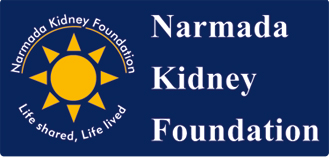
HEALTH BENEFITS OF PHYSICAL ACTIVITY
Mechanisation and automation has led to consumers having a limited motivation to perform physical activities. There is a big paradigm shift from the way our ancestors lived (as hunter and gathers) in comparison to the way we live today. In a technologically advanced world, our lifestyle with respect to physical activity has changed drastically! From being animals that always functioned by standing and squatting and who are either always running away from a predator or running towards a pray, we have become animals that sit on the chair for longer period of time. This has led to deterioration of our health and fitness very early as compared to an average human being of the Palaeolithic era.
The individuals occupying CXO positions in the corporate today have a very big incentive to lead a sedentary lifestyle, glued to their workstation chairs. In the modern world, sitting can be termed as the new smoking! A sedentary lifestyle has not only increased our chances of developing metabolic diseases in an early age, but it has also led to an increase in the rate of people dying of all-cause mortality early in life.
Not only has this reduction in physical activity led to increased mortality rate, but also the dramatic shift of the modern diet, which are high in sugars and starch, has also led to poor health of the modern man. The diet of the modern man as compared to the earlier diet of the beings of the Palaeolithic era (which comprised mostly of nuts, fruits and high protein rich food such as meat, eggs and fish) is poor. These dietary changes have taken place at a faster rate to the little time that our bodies have been given to adapt appropriately to these modern, refined food stuff that an average human being eats today.
Leisure centres and sporting facilities play a significant role in offering an environment in which individuals can engage in physical activity. Engaging in physical activity is important for the well-being of both, the individuals and their communities. In the contemporary world, unhealthy lifestyle led by a significant number of individuals has given rise to a variety of health problems suffered by them. This has also been the reason for many of them to find ways to get physically active by playing sports and going to fitness centres for physical exercises to compensate for the lost physical activity. Engaging in exercise and physical activity has been reported as one of the means by which individuals combat stress arising from work and their personal life.
The health and fitness industry has become increasingly important in providing such individuals some form of therapeutic solution to their health concerns. The primary role of the fitness industry is to provide preventive solutions to maintain good health and fitness regime to individuals which cannot be underestimated when compared with the role of restorative medicine in diagnosing and curing a pathological state. The fitness sector attempts to fight the increasing rate of ailments related to hypokinetic conditions.
Many health authors and health authorities concur that a health care approach that places emphasis on prevention of diseases has a lower net-cost-effect, and such an approach also improves lifespan of individual people. An active lifestyle helps in the prevention and management of diseases such as coronary heart disease, adverse cholesterol profile and blood lipids, hypertension, impaired cardiac function, weight control and body composition, bone mineral status, musculo-skeletal disorders and blood sugar metabolism among many other pathological conditions that have an adverse effect on health. Some rehab programmes offered by the wellness industry include counselling for psychotherapy. As a result of increase in the demand for services by consumers, responding to their needs by providing them with health monitoring and health maintenance programmes has become a common practice in the health and wellness industry.
Written By: Mr. Vijay Thakkar, Masters in Sports Management, University of Glamorgan, UK, CPT, National Academy of Sports Medicine (USA)
